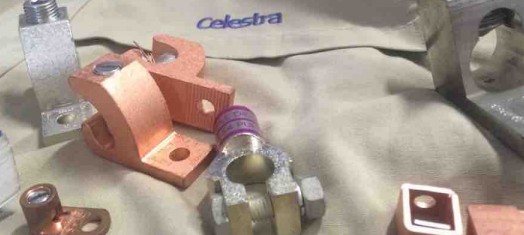In terms of corrosion resistance and ruggedness, the suitability of metal coatings must be judged with knowledge of the actual installation method and the environment of the application. For example, what type of compression die is used? What is the chemical environment of the installation?
The industry standard for plating of copper compression lugs is electro-plated tin, with a nominal thickness of 0.0012 inches and a minimum thickness of 0.0002 inches. This is about 10% of the thickness of a typical human hair, which is about .003 inches in diameter.
Lead plating is sometimes specified (for example in battery-production or paper pulp facilities) to improve corrosion resistance compared with standard tin electro-plate. Lead plating normally has a thickness of 0.002 inches, but lead is very soft and susceptible to damage during installation with compression dies. Also, lead must be handled carefully due to health concerns.
However, a much thicker, more rugged, tin coating is available. The hot-dip tin process results in a nominal coating thickness of 0.005 inches, which is about 5 times thicker than tin electro-plate and 2 1/2 times thicker than lead. Because of the thickness and the relative toughness of tin, hot-dip tin plating is quite rugged and less likely to be damaged during installation by a compression die or by a wrench during bolt tightening.
For high temperature applications, nickel plating increases the temperature rating of copper lugs to 650oF (343oC).
On a special basis, Celestra can supply lugs with hot-tin dip plating or nickel plating.






